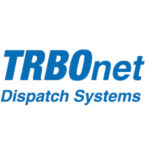

Implementing a dispatcher system requires careful planning to ensure successful adoption and utilisation.
This blog post provides best practices and considerations including: assessing current processes, setting clear objectives, involving key stakeholders, planning for training and support, and monitoring and evaluating performance. By following these guidelines, organisations can streamline communication and boost productivity with dispatcher software.
Here are some best practices and considerations to keep in mind:
1. Assess your current processes: before deploying a dispatcher system, evaluate your current communication and data sharing workflow processes. Identify areas that can be improved and determine how the software can address these issues.
I.e. could this software replace other processes in addition to radio system monitoring: GPS tracking, alarm management, job ticketing, guard tours or lone worker apps.
2. Set clear objectives: define your goals and objectives for using this type of software bolt on. Whether it’s improving response time, increasing efficiency, improving safety KPI’s or reducing errors, having clear objectives will guide your implementation strategy.
For example, one objective could be to improve response time by automating the dispatching process and quickly assigning calls, job tickets, file sharing to provide faster assistance.
Another objective is to increase efficiency through automation features like scheduling and routing, optimising resource allocation and minimising downtime for improved productivity and cost savings.
Improving safety KPIs is also a goal, achieved through features like GPS tracking and real-time monitoring in the dispatcher software, ensuring resource tracking and enhancing safety protocols.
3. Involve key stakeholders: engage with direct users, supervisors, and IT personnel in the decision-making process. Their input and feedback will provide valuable insights and ensure buy-in from the entire team.
For example, the project manager could organise a series of demos and feedback sessions. Direct users, in particular, would be given the opportunity to test the software tool and provide feedback on its practicality, ease of use, and potential benefits for their day-to-day work.
Supervisors would also be included to assess the tool’s potential impact on the department’s workflow and efficiency.
IT personnel would be involved to assess the feasibility and compatibility of the software tool with existing systems and infrastructure, as well as to provide technical guidance and insights.
4. Plan for training and support: comprehensive training and ongoing support are crucial for successful implementation and system adoption.
Firstly, allocate sufficient time and resources for training your team with your system provider on how to use the software effectively. These training sessions should cover all essential functions and features to help your team become proficient in using the software. Work with your provider to develop aftercare support materials for your employees to utilise as handy resources.
Additionally, it is important to establish a support system to address any issues or questions that may arise during and post deployment. Select a company that provides ongoing support and has a dedicated team of manufacturer trained engineers who are readily available to assist with any technical difficulties or queries related to the dispatcher software.
5. Monitor and evaluate performance: regularly assess the performance and impact of the software. Monitor key metrics such as response time to job tickets, alarm management, improved customer satisfaction, and increased productivity to measure the software’s effectiveness and make any necessary adjustments.
For example, a company implements dispatcher software to improve response time to job tickets and alarm notifications.
After the software has been in use for a few months, the company begins evaluating its performance. The monitoring reveals that the software has improved response times to job tickets by 20%, resulting in a higher customer satisfaction rating. However, the alarm management aspect of the software is not performing as expected, with notifications being ignored, leading to increased errors and delays.
Based on this evaluation, the company decides to make necessary adjustments to improve the alarm management feature of the software. They work closely with the software provider to address the issues and implement updates. Continued monitoring and evaluation after the adjustments show a significant improvement in alarm management, with error rates decreasing by 40%.
To summarise,
By following these best practices and considerations for implementing a dispatcher system, you can streamline your communication and boost productivity.
Looking to take a deeper dive into this subject? Take a look at our blog post here that covers the benefits of dispatcher software and provides real-life examples of how organisations have used it.
Recommended dispatcher software
Read more
Let’s start a conversation
If you would like further information, or to discuss your requirements onsite:
Book An Appointment | Arrange A Quotation | Call 033 3939 0022











